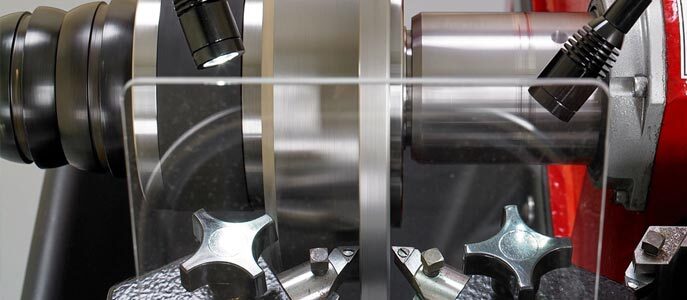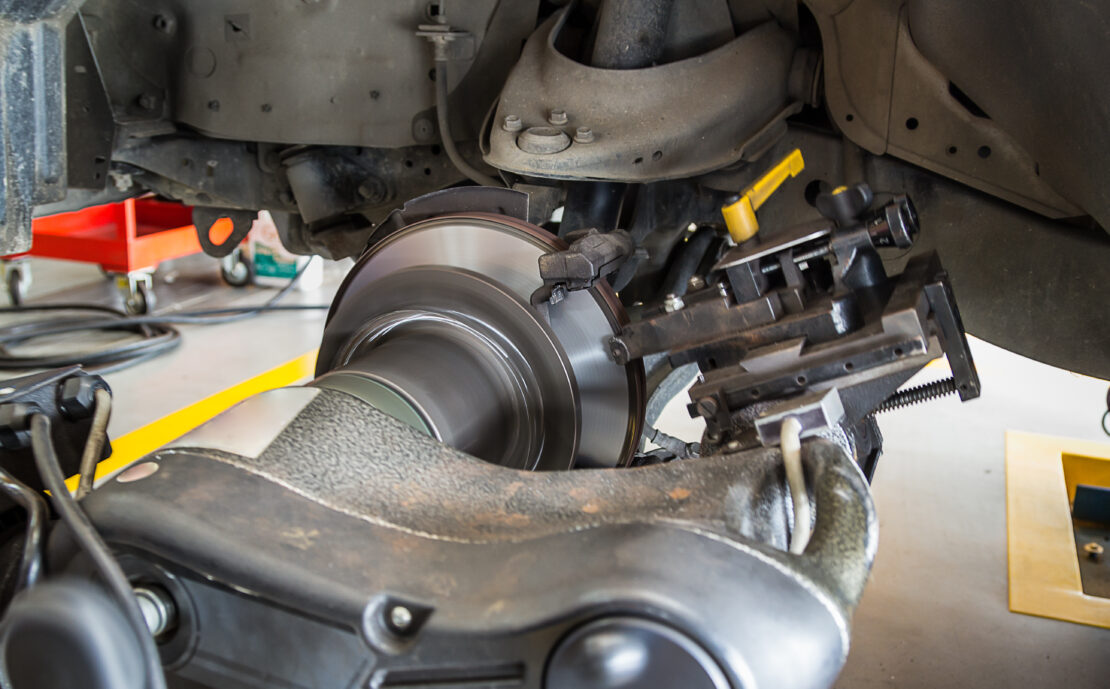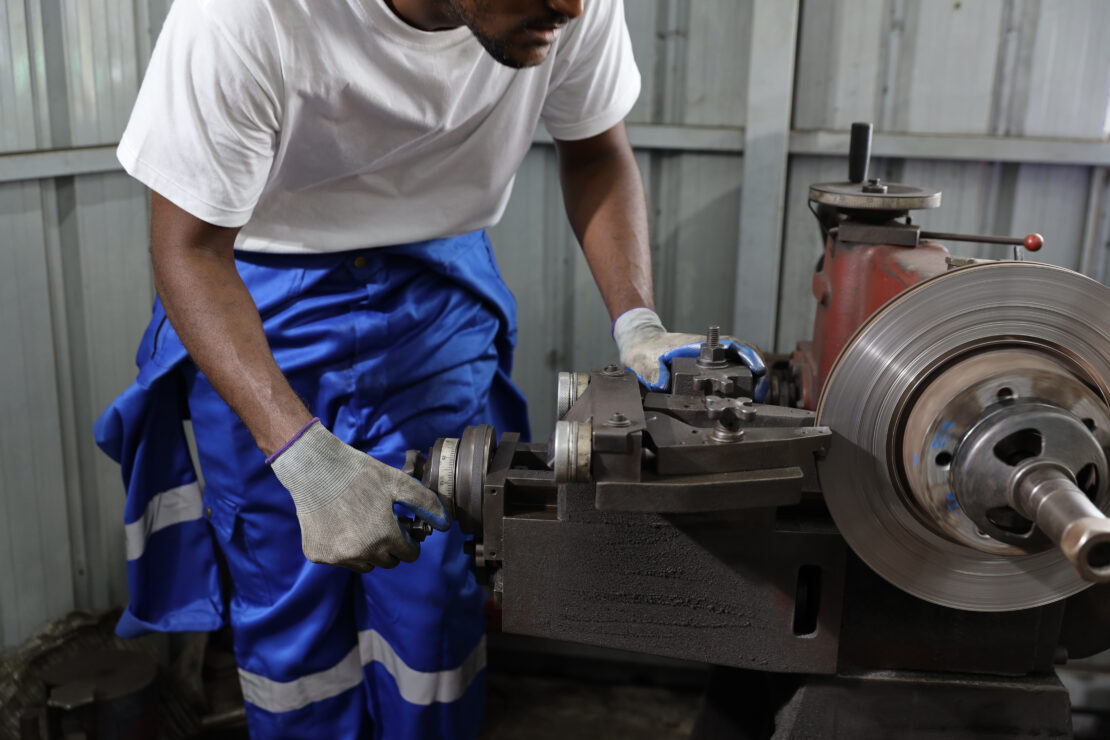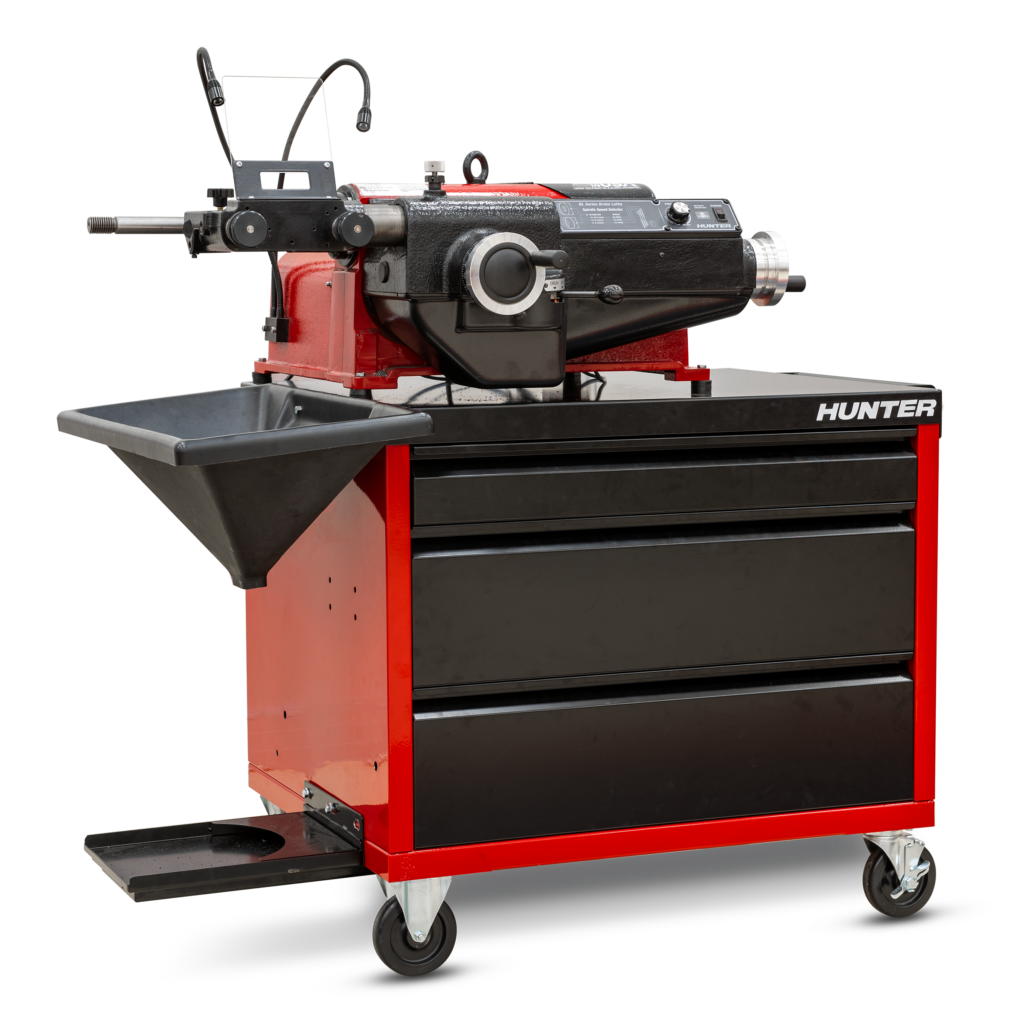
How to Choose the Right Brake Lathe for Your Auto Shop
The right brake lathe can drastically reduce repair times, provide more precise machining, and improve service and profit. However, the challenge is that there isn’t one universal brake lathe you can choose for your shop. The type of lathe you need will primarily depend on the vehicles your shop frequently services (or plans to service).
Type of Brake Lathe
There are five types of lathes: on-car, off-car, disc, drum, and combination. Each has its pros and cons. Understanding their differences and uses will help you narrow down which one is right for your shop.
On-Car

As the name suggests, an on-car lathe is directly mounted on the vehicle. On-car lathes are known for their precision and lowered risk of lateral runout, which can cause dynamic imbalance and uneven pad wear. The other added benefit of an on-car lathe is that your service technicians can work on different rotors at the same time, ensuring optimal alignment.
The downside is that they are more expensive, need consistent maintenance and calibration, and require extensive training.
Off-Car

An off-car lathe (or bench lathe) is less expensive compared to an on-car lathe. It’s portable, allowing technicians to machine different vehicle parts and components and adjust the cutting head to specific depths for more precise cutting. They also come with numerous adapters, making it easy to machine, turn, knurl, sand, or drill different-sized car and truck parts.
While off-car lathes are versatile, flexible, less expensive, and easy to use, they don’t offer the same level of precision as on-car lathes.
Disc
A disc lathe is specifically designed for resurfacing disc brakes and can either be on-car or off-car. The same rules apply in terms of their benefits and drawbacks. An on-car disc lathe provides more resurfacing accuracy but is more expensive and requires more maintenance, calibration, and training time. An off-car disc lathe is less expensive and offers more flexibility and versatility, but doesn’t have the high precision or accuracy compared to an on-car disc lathe. Most auto shops go with less specialized brake lathes.
Drum
Much like the disc lathe, a drum lathe is designed for resurfacing drum brakes. There are on-car drum brakes and off-car drum brakes. While drum brakes are less common on vehicles these days, some automotive manufacturers still use them on the rear wheels of new models. This lathe type is typically not a practical solution for most auto shops unless you provide very specialized services.
Combination
A combination lathe is the ultimate choice for versatility and precision. It’s a multifunctional lathe that can be used for disc, drum, and rotor resurfacing.
A combination lathe is exceptionally accurate, but it’s also the most expensive, both in terms of its initial costs and in the numerous adapters required for the different brake types. This type can also take up a ton of space, so it might not be a good solution for small shops. However, given that it can be used on all kinds of different makes and models, it is often the preferred solution for working on foreign-made vehicles.
Size & Capacity
When deciding among these lathe types, consider the lathe’s size and capacity, as well as the type of work your shop does. Do you often work with vehicles where rotor removal is difficult? If so, an on-car lathe will be easier for your technicians once they’re trained on how to use it. Comparatively, if you service all types of vehicles and need to work on multiple rotors simultaneously, you may want an off-car or combination lathe.
Ease of Use
Most brake lathes are easy to use once training has been provided. Bench/off-car lathes offer the fastest setup and better ease of use, but even on-car lathes will feature intuitive controls to help shorten setup times.
Cost
Don’t think of costs as only related to the upfront price. Instead, think of the long-term value that lathe will bring and what you can expect in terms of a return on investment (ROI). A lathe that cuts setup times, is easier to use, more intuitive, is more precise, requires less rework, is more energy-efficient, and is more accurate will save your technicians a considerable amount of time while saving you a substantial amount of money. Additionally, think of your shop’s future—what type of vehicles are you planning to service in the future? Ensure you invest in a lathe that can support this future.
| Lathe Type | Size | Ease of Use | Type of Car | Cost | Common Optional Features |
| On-Car | Compact and portable | Requires more skill and training | Most vehicles, but is ideal for vehicles where rotor removal is difficult | Moderate to high | Vibration-reducing systems; adaptors; alignment diagnostics |
| Off-Car/Bench | Larger than an on-car model but still portable | Easier to set up compared to on-car lathes | Most vehicles | Moderate | Adjustable cutting heads for discs and drums; automatic feed controls; dust and debris collection systems |
| Disc | Mid-sized, larger than an on-car model (stand-mounted or bench-mounted) | Easy to use | Only vehicles with disc brakes | Moderate | Dual-speed; quick setup; debris collection systems |
| Drum | Mid-sized (stand-mounted) | Easy to use | Only vehicles with brake drums | Moderate | Automatic adjustment; dust collection systems |
| Combination | Large; typically requires more space than other lathe types | Easy to use | Any | High | Dual cutting heads; integrated measuring tools; variable speed control; automated adjustment systems |
Our Recommendation: The BL Series Bench Brake Lathe

If you’re looking for a brake lathe that’s affordable, easy to use, accurate, and versatile, we recommend Hunter’s BL Series Bench Brake Lathe. It’s a precision-engineered brake lathe that allows quick rotation between rotors and drums. It also features adjustable spindle speed and feed rate, push-button speed control, near-instant calibration, and new anti-chatter technology for vibration-free startup.
Find Your Solution Today
Allied, Inc. is a trusted supplier of automotive equipment, including lifts, wheel balancers and tire changers, air compressors, and brake lathes. We sell equipment to shops across the United States and even provide installation, inspection, and repair services to customers in Michigan and northern Ohio.
If you need help finding the right equipment for your shop, whether it’s a brake lathe or a lift, please contact us today to speak with one of our experts.
